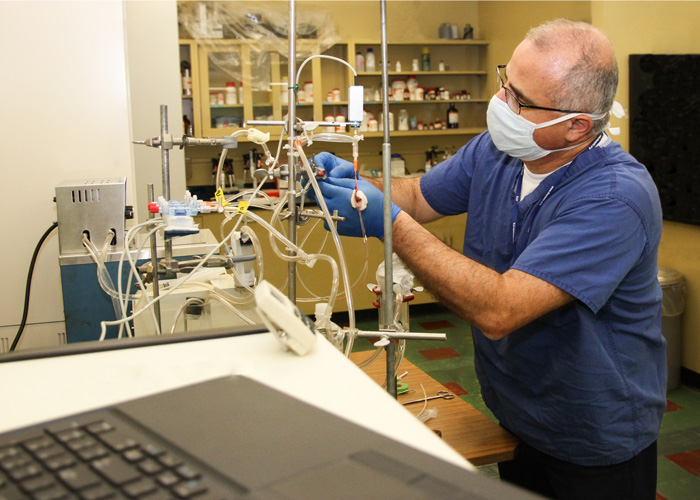Josephine Allen, Ph.D. received her bachelor’s degree in biology from California State University Northridge, and her Ph.D. in 2009 from Northwestern University in Biological Sciences, and in 2010 she joined the Materials Science and Engineering Department at The University of Florida as an Assistant Professor and was promoted to Associate Professor with tenure in 2017, and Full Professor in 2023. In 2024 Dr. Allen took on a leadership role as the Associate chair for the Department of Materials Science and Engineering at the University of Florida. Most recently, in August 2025, Dr. Allen moved her research program to the Medical College of Wisconsin within the Department of Pediatrics and Division of Cardiology. Dr. Allen currently serves as Director for Pediatric Cell and Tissue Engineering at MCW, while maintaining an affiliate appointment within the Biomedical Engineering Department at Marquette University. Dr. Allen’s research is in the areas of vascular tissue engineering and regenerative medicine, with specific interest in controlling vascular cellular processes including progenitor cell differentiation. Her lab is also interested in understanding the effects of dynamic environmental conditions, including space, on cellular processes associated with cardiovascular deconditioning. Lastly, Dr. Allen’s research program also focusses on addressing sex based vascular health disparities through the engineering of personalized biomaterials. Dr. Allen has received numerous awards for her work including the prestigious National Science Foundation, Career Award in 2015 and in 2016 she received the University of Florida Office of the Provost Excellence Award for Assistant Professors. In 2018 Dr. Allen was named the Genzyme Professor of Materials and Engineering, and in 2020 she was inducted as an AIMBE fellow, and in 2021 a fellow of BMES. Allen’s research has been supported by the American Heart Association (AHA), National Science Foundation (NSF), The National Institutes of Health (NIH), National Aeronautics and Space Administration (NASA), and the US. Army Department of Defense (DoD).
Learn more about Dr. Josephine Allen
A versatile bioactive DNA based hydrogel material system for broad applications in tissue engineering
The Allen lab has three main research thrusts in cellular engineering, biomaterials, and the study of dynamic environmental conditions. The focus of this seminar will be recent work in these three areas as it relates to tissue engineering. Our work in cellular engineering is motivated by the continued challenge to control cellular processes, including processes involved in angiogenesis, which are critical for successful tissue regeneration. Our approach is the development of receptor agonist in the form of DNA aptamers. We have fabricated a novel divalent aptamer assembly that shows agonist function towards vascular endothelial growth factor receptor 2, leading to downstream pathway activation. Our biomaterials work focuses on our goal to create an extracellular matrix mimic composed of ssDNA in complex with collagen. These novel DNA based materials are versatile, bioactive, support cellular remodeling and processes involved in angiogenesis as well as having tunable mechanical properties. Our work to study dynamic environmental conditions focused on cell-material interactions and sex-specific mechanoresponsive behavior. Our labs’ overarching goal is the generation of personalized biomaterials, and advancement from a one-size fits all model.


